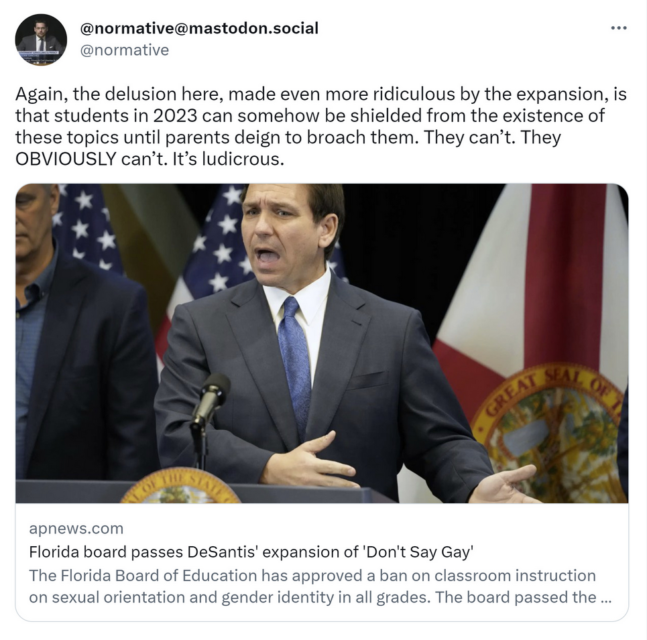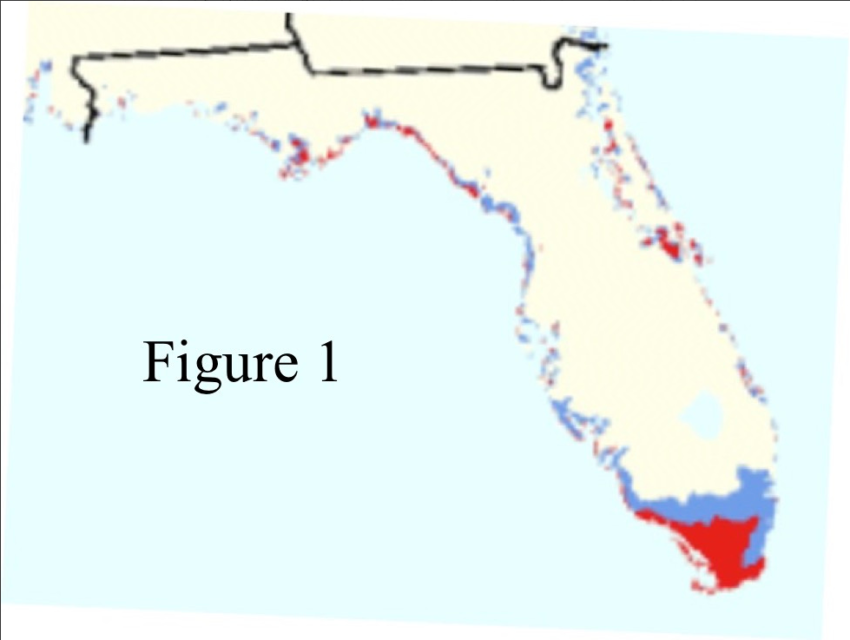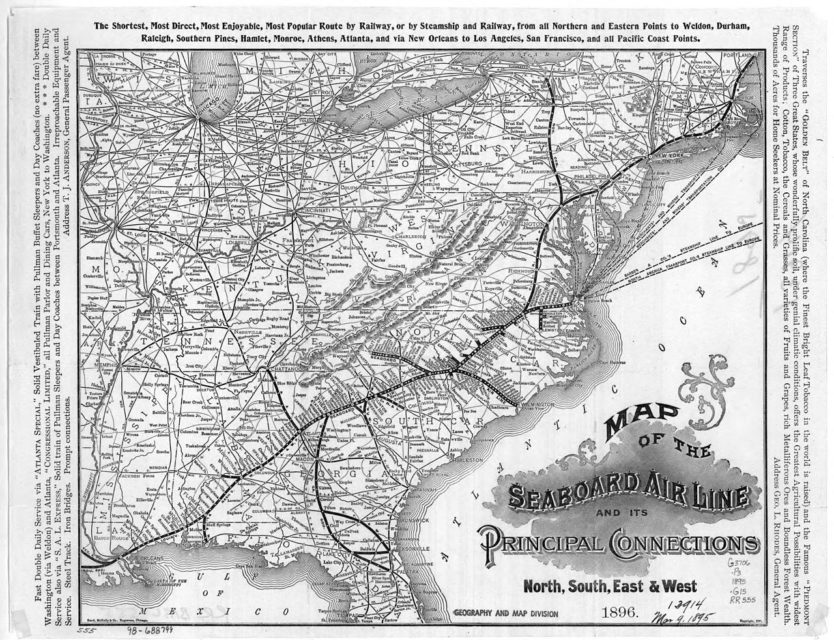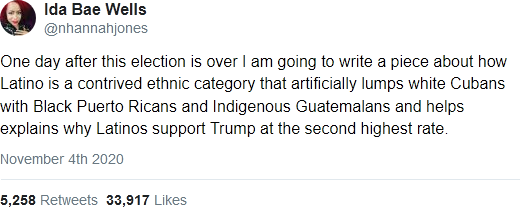spiked
Published Apr 10, 2024
The Walt Disney Company has gone from being an international treasure to an international laughing stock. Its films are flopping at the box office and fans are fuming. All because it has gone ridiculously woke, to an almost comical degree. No Disney film, franchise or TV series is now complete without clunky “progressive” messages about diversity, feminism and gender. The company has even started picking fights with anti-woke politicians. Here, Lauren Smith documents Disney’s Great Awokening – and the fan revolt against it. Watch, share and let us know what you think in the comments.Support spiked:
https://www.spiked-online.com/support/
Sign up to spiked’s newsletters: https://www.spiked-online.com/newslet…
Check out spiked’s shop: https://www.spiked-online.com/shop/
April 11, 2024
Disney: go woke, go broke?
January 11, 2024
Art Deco Architecture
Prof. Lynne Porter
Published 22 Apr 2021Lecture for Fairfield University class called “What We Leave Behind: the History of Fashion & Decor”.
December 23, 2023
Ribbon Candy for Christmas at Lofty Pursuits
Lofty Pursuits
Published 19 Dec 2016Public displays of Confection use a very old ribbon candy machine to finally make some nice ribbon candy just before Christmas 2016. This batch was cherry, but we’ve made tutti frutti, and peppermint too. Lofty Pursuits makes candy on equipment made from the late 1800’s until the modern day. We concentrate on finding and restoring old candy equipment and re-learning the dying art of hard candy making.
http://www.pd.net to see the candy we sell.
June 21, 2023
Was Starship’s Stage Zero a Bad Pad?
Practical Engineering
Published 20 Jun 2023Launchpads are incredible feats of engineering. Let’s cover some of the basics!
Unlike NASA, which spends years in planning and engineering, SpaceX uses rapid development cycles and full-scale tests to work toward its eventual goals. They push their hardware to the limit to learn as much as possible, and we get to follow along. They’re betting it will pay off to develop fast instead of carefully. This video compares the Stage 0 launch pad to the historic pad 39A.
(more…)
May 30, 2023
Ban all the words!
Chris Bray reflects on the historical context of literature bans:
Before the Civil War, Southern states banned abolitionist literature. That ban meant that postmasters (illegally!) searched the mail, seized anti-slavery tracts, and burned them. And it meant that people caught with abolitionist pamphlets faced the likelihood of arrest. The District of Columbia considered a ban, then didn’t pass the thing, but Reuben Crandall was still arrested and tried for seditious libel in 1833 when he was caught with abolitionist literature. He was acquitted, then died of illness from a brutal pre-trial detention. Seizure, destruction, arrest: abolitionist literature was banned.
The Soviet writer Yevgeny Zamyatin wrote a 1924 novel, We, depicting a world in which an all-powerful government minutely controlled every aspect of life for an enervated population, finding as an endpoint for their ideological project a surgery that destroyed the centers of the brain that allowed ordinary people to have will and imagination. The Soviet government banned Zamyatin’s work: They seized and destroyed all known copies, told editors and publishers the author was no longer to allowed to publish, and sent Zamyatin into exile, where he died without ever seeing his own country again. Seizure, destruction, exile: Yevgeny Zamyatin’s work was banned.
During World War I, the federal government banned literature that discouraged military service, including tracts that criticized conscription. Subsequently, “socialists Charles Schenck and Elizabeth Baer distributed leaflets declaring that the draft violated the Thirteenth Amendment prohibition against involuntary servitude”. They were arrested, convicted, and imprisoned. The Supreme Court upheld the conviction. Anti-conscription literature was banned: It was seized and destroyed, and people caught distributing it were sent to prison.
In 2023, the tedious midwit poet Amanda Gorman posted on Twitter that she was “gutted” — the standard emotion for tedious midwits — to discover that one of her poems had been “banned” by a school in Florida. The news media raced to proclaim that Florida schools are banning books, the leading edge of the Ron DeSantis fascist wave.
As others have already said, Gorman’s boring poem was moved from an elementary school library shelf to a middle school library shelf, without leaving the library
April 22, 2023
“I’d stock every preschool classroom with The Anarchist’s Cookbook if I could”
I’m also a libertarian, but I might not go quite as far as Freddie deBoer in the quote in the headline:
Julian Sanchez makes good sense here on recent bills in Florida designed to regulate and censor LGBTQ content in schools:
Yes, indeed. Kids will learn about LGBTQ issues sooner or later. It’s pointless to try and keep them from finding out about the existence of homosexuality, of gay love, of gay marriage, of trans people and gender nonconformity. They’re gonna find out. They have smartphones, usually much younger than they should. They’re curious and the world is always a click away. It’s foolish to try and prevent them from learning about this stuff. And, in fact, the more that you try to restrict what they learn, the more likely they are to explore this world in a way that openly defies your efforts. LGBTQ people, politics, art, and culture exist. You’re entitled to object to LGBTQ rights, in a free society, but you’re not entitled to (or able to) create a bubble in which others are kept hidden from knowledge of the existence of LGBTQ people. People love that I’m forever tweaking liberals about their attachment to various forms of unreality, to thinking that they can wish away facts of life that they’re uncomfortable with. But it’s the same deal here.
Look, I will acknowledge that some of the reporting on the “Don’t Say Gay” bill has distorted and exaggerated what the bill calls for, and I also think there’s a lot of motivated dismissal about the nature of some of the content that’s being debated. For example, some people have gone to the ramparts to defend access to the book This Book is Gay, which explicitly advertises itself as a guide to sex, despite the fact that the author herself says it’s not for children. (Pictures of the book that are routinely circulated are typically dismissed as conservative fabrications, but you just have to look at the book to know that isn’t true.) Probably that particular example is a matter of some groups being lazy when putting together reading lists, but of course there are always going to be debates and edge cases.
Would I ban that book? Of course not. Personally, I’m completely libertarian about this stuff; I’d stock every preschool classroom with The Anarchist’s Cookbook if I could. But there’s a difference between holding that position and believing it’s credible to pretend that there’s literally nothing to debate there. It’s pointless to pretend that books in a public school classroom are going to remain untouched by these disagreements. The views of parents will inevitably be expressed through the democratic apparatus that presides over those schools. Of course people are going to debate this stuff. Vociferously.
Still, the objections are ultimately misguided for the reasons Sanchez says. Plenty of kids in extremely repressive conservative environments dreamed of a future as an openly gay person in a liberal city, before the internet. I’ve always had qualms about the “born this way” framing — if being gay was a choice, would society have any legitimate right to refuse people from making it? — but the simple reality is that gay people and trans people etc have always transcended restrictive social and religious environments in their interior life, even if it was too dangerous for them to express it. If a kid is gay, they’re gonna figure that out. You don’t have to speed along the process, but trying to artificially impede their progress won’t work. That’s an “is” statement, not an “ought” statement.
March 15, 2023
Not only is the science “settled” … it’s already in the school textbooks
David Friedman on his attempts to follow up on claims made in a textbook on climate change already in use in US public schools:
Introduction to Modern Climate Change by Andrew Dessler is an elementary climate science textbook, now in its third edition. In Chapter 9, “Impacts of Climate Change”, it has:
Scientists predict that sea level will rise 47 to 73 cm (19 to 29 inches) above 1995–2014 levels by 2100. This may not sound like a significant challenge, but it is much larger than the 18 cm of sea level experienced over the twentieth century, which is already challenging for many who live near sea level. Like temperature, these predictions of sea-level rise might sound small but, also like temperature, they are not. In Florida, for example, a sea-level rise in the middle of the projected range would inundate 9 percent of Florida’s current land area at high tide. This includes virtually all of the Florida Keys as well as 70 percent of Miami-Dade County. Almost one-tenth of Florida’s current population, or nearly 2 million people, live in this vulnerable zone, and it includes residential real estate valued at hundreds of billions of dollars. It also includes important infrastructure, such as two nuclear reactors, three prisons, and 68 hospitals.
That struck me as implausible, given what else I had seen on the effect of sea level rise. The footnote for the claim was to Stanton and Ackerman (2007), which turned out to be not a peer reviewed journal article but a report commissioned by the Environmental Defense fund, an environmentalist group. It includes the same claims, but for 27 inches of sea-level rise not the 24 inches that is Dessler’s “middle of the projected range”. It refers the reader to Appendix C for “detailed sources and methodology”. Going there, I found:
To estimate the impact of sea-level rise on land area, populations, and public and private assets and infrastructure, we began with a 1:250,000 Digital Elevation Model (DEM) map of the State of Florida, and divided the state into “vulnerable” and “not vulnerable” zones demarcated by 1.5 meters of elevation and other factors described by Titus and Richman (2000) as corresponding to 27 inches of sea-level rise.
So what they are showing as the vulnerable area is not the 27 inch or 24 inch contour but the 1.5 meter (5 feet) contour. The explanation, from Titus, J.G. and C. Richman (2001). “Maps of lands vulnerable to sea level rise: modeled elevations along the US Atlantic and Gulf coasts“. Climate Research 18: 205–228, a journal article written by two EPA people and presumably peer reviewed:
Thus, at a typical site, the 1.5-meter contour would be flooded by spring high tides (i.e., high tides during new and full moons) when sea level rises 80 cm
Figure 1 below (Titus and Richman Figure 4) is a map of Florida with the region within the 1.5 meter contour colored red, the region between 1.5 and 3.5 blue. Dessler’s middle of the projected range is 60 cm. Stanton and Ackerman’s 27 inches is 68.6 cm. The map shows what its authors claim would be flooded at 80cm.
Figure 2 below is a population density map of Florida from Wikipedia to which I have added the 1.5m contours from Figure 1. The large flooded area on the southern tip of Florida includes none of the densely populated area around Miami; only one of the tiny areas farther north appears to be in part on a populated area. That is not surprising — areas very close to sea level are likely to be marsh, in this case the everglades, and poor places to build on.
Stanton and Ackerman claim that their own calculations, using data bases of elevation and population, produce a total population in the at-risk area of 1.5 million. That was the figure Dessler gave in his first edition, presumably increased to almost 2 million in the third edition to reflect the increase in Florida’s population. Figure 2 shows why I don’t believe it. The flooded areas are in places almost all of which have very low population density, making it hard to see how flooding nine percent of the land area, most of it in the everglades, can flood almost ten percent of the population. Even if all of the Florida Keys are flooded, their total population is only about 80,000.
That problem is in addition to the fact that Dessler’s claim is for 60 cm of sea level rise, Stanton and Ackerman’s, from which Dessler got his figure for how many people are flooded, is for 68.6 cm (27 inches), and Titus and Richman get the 1.5 m contour that Stanton and Ackerman say they are using by assuming 80cm of sea level rise. Further reasons for suspicion are that Stanton and Ackerman gave figures for sea level rise substantially higher than either the IPCC figure at the time or the current IPCC figure, which suggests that they were trying to make the consequences of climate change look as scary as possible, and that they write “1.5 meters of elevation and other factors described by Titus and Richman (2000) as corresponding to 27 inches of sea-level rise” when Titus and Richman actually describe 1.5 meters as corresponding to 80 cm (31.5 inches) of sea level rise.
February 7, 2023
Disney – An Empire In Collapse
The Critical Drinker
Published 6 Feb 2023Disney isn’t looking too healthy these days, with massive financial losses, collapsing stock prices and internal power struggles threatening to tear the House of Mouse apart at the seams. How did this happen? Let’s find out.
(more…)
March 20, 2022
Florida’s new passenger rail service
Thomas Walker-Werth contrasts the different experiences of California and Florida in trying to build new passenger railway services:
When the Federal Government ordered the construction of the Interstate Highway System in the 1950s and 1960s (at a cost to taxpayers of roughly $580 billion in 2022 dollars), it all but killed America’s privately operated passenger railroads. Since then, rail travel in America has mostly consisted of government-subsidized Amtrak services of deteriorating quality that amble across the country, catering to a niche market of leisure travelers and those with no other options. On the busy Northeast Corridor between Boston and Washington D.C. there is still enough demand to operate a busy, profitable service, but elsewhere Amtrak’s services are too slow, inconvenient, and infrequent to effectively compete with highways and airlines.
But with gas prices rising and traffic congestion strangling many American cities, passengers, investors, and government planners are all reconsidering railroads. Several new projects have sprung up across the country, aiming to link major cities a few hundred miles apart, where a train might provide a more convenient journey than a plane, car, or bus. Some of these projects are led by state governments, others by private companies. The contrast between the two is dramatic. To illuminate that difference, compare the government-run California High Speed Rail project with Brightline, a new private rail system in Florida.
Approved in 2008, California High Speed Rail (CHSR) was expected to deliver a 520-mile two-track, electrified high-speed railway on an all-new route between Los Angeles and San Francisco by 2029. Fourteen years later, CHSR is now only expected to have a 171-mile single-track section between Madera and Bakersfield will be operational by 2030. Meanwhile the project’s cost has ballooned to $80 billion from an original budget of $33 billion, and costs are expected to rise further to $100 billion, or triple the original budget.
Meanwhile in Florida, a very different kind of passenger railroad is already up and running. Brightline was launched in 2012 by the Florida East Coast Railway, a private freight railroad. Unlike CHSR, Brightline mostly uses existing routes, removing the need to acquire (or appropriate) large amounts of land. Instead of building the whole line before beginning any passenger services (as CHSR is doing), Brightline began construction on a 70-mile section from Miami to West Palm Beach in 2014 and opened it to passengers in 2018. This meant that Brightline already had an operational, revenue-producing service before embarking on the 170-mile northward extension to Orlando Airport. That extension is expected to open in 2023, and the entire project will cost about $1.75 billion, raised through private financing.
This equates to about $7.3 million per mile for Brightline, compared to $153.8 million per mile for CHSR (using the current $80 billion budget). Why will CHSR cost at least twenty times more per mile than Brightline? How has Brightline managed to deliver a high-speed intercity passenger rail system within ten years whereas CHSR needs twenty-two years to deliver an incomplete, scaled-down version of its original plan? Much of the answer comes down to the fundamental nature of public works projects such as CHSR.
This isn’t quite a fair apples-to-apples comparison between Brightline and CHSR, as Brightline’s services will have to interact with freight trains on conventional rails while CHSR — if ever completed — will be a separate line hosting only CHSR’s own high-speed passenger trains. Brightline’s trains will probably not have the theoretical top speed that CHSR is intended to use, as the physical plant of rail lines intended for mixed-use traffic will limit the speeds due to signalling, traffic density and braking distances of the respective types of trains.
March 18, 2022
The “DeSantis Doctrine”
Kurt Schlichter confesses a man-crush on Florida governor Ron DeSantis:

Governor Ron DeSantis speaking at the 2021 Student Action Summit hosted by Turning Point USA at the Tampa Convention Center in Tampa, Florida on 18 July, 2021.
Photo by Gage Skidmore via Wikimedia Commons.
You gotta hand it to a guy who convinces Democrats to die on the hill of defending perverted groomers talking about sex with little school kids. It’s on-brand for their fellow travelers at The Lincoln Project, but you would think that Democrats actually want to win elections. But no – they want to make the schools safe for pedos, and they don’t care who knows it. But they’ll care plenty in November when parents around the country come out and vote for The Party of Not Hitting on Der Kinder.
Donald Trump has his record of achievement – economic success and peace abroad. But Ron DeSantis has the DeSantis Doctrine, sort of like the Monroe Doctrine, except instead of keeping shady foreigners out of our hemisphere, the DeSantis Doctrine keeps woke fascists out of our lives.It was DeSantis who started the fire that burned the pyre of Democrat hopes and dreams they jumped onto in their campaign against the Florida anti-grooming statute. But that’s only his latest fight with the elite. DeSantis has been laying down the law in Florida, literally, and in a way even Donald Trump never did. At some level, Donald Trump still has some residual respect for the trappings of the elite. He’s impressed by name universities and huge corporations, and for all his much-justified complaining, he still cavorts with institutions that hate him, like the NYT. He’s not yet completely done with the institutions, but DeSantis is. DeSantis is all honey badger, laying waste and making the rubble bounce.
It’s the DeSantis Doctrine, and it’s summed up this way: Your garbage institutions don’t mean Schiff to me. I am going to ruthlessly wield my power to protect normal people from your depredations. And I’m going to smile doing it.
Did the head of China-hugging Disney really think he was going to push Big Ron around? The nattering twenty-somethings and woke pronoun people in his company and on social media thought they could leverage their power to make this huge Florida employer bring DeSantis to heel over the threat that creepy weirdos could no longer chat up kindergartners about sex in schools. So this dude – who shrimps Chi Com toes even as his commie masters torment, torture, and terminate Uighurs and prop up Putin – comes out and really expects that DeSantis will fold. And then DeSantis, delighted at the chance to figuratively post a rodent skull on a pike, told the Mouse to pound some Sunshine State sand.
But I was informed by all the smart people with blue checks trapped in a vortex, which keeps them forever in the year 2005, that conservatives were supposed to hate regulation and love big corporations.
Well, things change – among them, the left, which decided that it was going to weaponize every institution against us, including corporations. A key element of that campaign is neutralizing normal people’s retaliation by barring us – through the application of principles that exist only in a paradigm that no longer does – from exercising our own power. “It’s so unseemly for a governor to attack a corporation!” Perhaps, in a world where corporations tend to literally mind their own business and not use their economic power to affect policy. But it’s ridiculous to expect that, in a world where corporations regularly use their power to affect politics, we normal people are somehow barred from using our own power – political power, including the power to regulate – to protect ourselves. You don’t get to change the rules, then expect us to remain bound by the old ones.
Well, you can expect that – many do, in fact – but Ron DeSantis scoffs at such unilateral disarmament. He’s all about the massive retaliation.
June 10, 2021
The odd history of Irish Cream as we make Irish Cream hard candy at Lofty Pursuits
Lofty Pursuits
Published 25 Feb 2021Jake makes Irish Cream green shamrock hard candy for St. Patrick’s day. We discuss the history of the weird flavor and how it has become a tradition even though it was invented in the 1970’s
A great article about the history of Irish Cream
https://www.irishtimes.com/culture/bo…Buy our candy: http://www.pd.net
Listen to our podcast: http://loftypursuits.libsyn.com/website
Join our Patreon at https://www.patreon.com/LoftyPursuits
March 4, 2021
Fallen Flag — the Seaboard Air Line Railroad

Seaboard Air Line logos used in print advertising, circa 1900 (left) and 1916 (right).
Wikimedia Commons.
This month’s Classic Trains fallen flag feature is the Seaboard Air Line by Larry Goolsby. The railroad’s earliest antecedent was originally chartered in 1832 to build a rail line from Portsmouth, Virginia to Weldon, North Carolina, a port on the Roanoke River which flows into Albemarle Sound. The Portsmouth & Roanoke began operation in 1834 and changed its name to the Seaboard & Roanoke around 1838 after several financial reorganizations and refinancing efforts. In 1837, the first passenger fatalities in US railroad history occurred in a head-on collision between a eastbound lumber train hit the westbound passenger train from Portsmouth on 11 August. Three young women were killed in the accident, all members of the Ely family.
Along with most other railroads in the Confederate states, Virginian and North Carolinian railroads were seriously damaged physically in the fighting and became political footballs during the Reconstruction Era. In the 1880s, the Seaboard and Roanoke was one of several railroads merged to form the Seaboard Air Line Railway which extended from Virginia to Georgia. The name Seaboard Air Line was in use well before the legal merger as a marketing device to help attract traffic.
The “Air Line” name was often used by railroads of the period to denote a route supposedly “as straight as the crow flies.” It was a reasonably direct run from Portsmouth to Weldon, but the Air Line label would be more than hype when in the 1880s Seaboard acquired a line linking Hamlet and Wilmington, N.C., which included a 79-mile tangent track, longest in the U.S.
As the 19th century closed, the SAL system came under control of a group led by John Skelton Williams, who added a line from Richmond, Va., to Weldon, and acquired the Florida Central & Peninsular, transforming what had been a Portsmouth–Atlanta carrier into a north-south line. In 1900, the various SAL roads were incorporated as Seaboard Air Line Railway with its coastal main line from Richmond going through Raleigh, Columbia, and Savannah to Jacksonville and Tampa.
While the World War II years strained SAL’s resources the railroad shouldered the load with new EMD FTs, secondhand steam engines from Western Maryland and Chicago & North Western, and installation of block signals and centralized traffic control over large portions of its main line. Wartime income helped the carrier emerge from receivership in 1946 as Seaboard Air Line Railroad.
High-profile wrecks, several involving passenger trains, spurred quick postwar completion of the signaling and modernization campaign. SAL’s earliest CTC installation had started south from Richmond in 1941. By the early 1950s, signals covered most mainline mileage, keeping the operation competitive with its double-tracked neighbor Atlantic Coast Line.
Seaboard added more streamlined cars from Budd in 1947 and lightweight sleepers from several builders beginning in 1949. The Silver Star name was given to what had been a second section of the Meteor, and the two “Silver Fleet” members held down the first-class New York–Florida trade. The Silver Comet was added to the New York–Birmingham route. Seaboard continued to maintain its premier trains to high standards into the 1960s, proudly calling itself “The Route of Courteous Service.” The Meteor and Star names survive on Amtrak’s New York–Miami route.
As with so many North American railways after World War II, the Seaboard faced stiff competition not only from direct competitors like the Atlantic Coast Line, but also from trucks diverting freight onto the interstate highway system but also from airlines whisking its passengers more rapidly to holiday destinations in Florida. The economic situation was clear in the mid-1950s and Seaboard applied for government approval to merge operations with rival Atlantic Coast in 1958, but did not get through the legal obstacle course until 1967 when the merger was formalized as the new Seaboard Coast Line Railroad.
November 7, 2020
Trump-supporting ethnic minorities were “enacting a form of white mimicry, or ‘white adjacency'”
In The Line, Kaveh Shahrooz looks at the accusations among the ultra-woke that members of ethnic minorities in the United States who voted for Trump can no longer be considered ethnic minorities and are guilty of variant forms of white supremacy:
Did self-hating racist Hispanic and Black people help Donald Trump? Did sexist women stop the promised Democratic blue wave?
Those may seem like bizarre questions, but according to the woke left, the answer is: yes.
A new narrative began to emerge on election night, after it became clear that Miami-Dade County — a heavily populated area in southern Florida — would go to Trump, thus preventing an early Joe Biden blowout. To the woke left’s chagrin, it was Trump’s significant support among Miami-Dade’s Hispanic voters, namely those in the Cuban-American and Venezuelan-American communities, that kept the state in the Republican column.
In a direct challenge to the widely held belief that Trump’s presidency is the result of a simple racist white patriarchal backlash, the incumbent president actually increased his support among Latinos, black males, Muslims, and Native Americans on election night. He also appears to have maintained much of his support among women.
To compensate for this cognitive dissonance, standard bearers of the woke left explained this phenomenon by implying that these ethnic minorities were enacting a form of white mimicry, or “white adjacency.” First out of the gate was the New York Times journalist Nikole Hannah-Jones, fresh off the controversy surrounding her 1619 Project, who tweeted that “white Cubans” should not be lumped in with “Black Puerto Ricans and Indigenous Guatemalans.”
Insofar as ethnic communities should not be assumed to share political interests simply because they speak the same language and come from roughly the same broad geographic region, it is hard to disagree with her. But her point was not anything nearly so straightforward. As she made clear in subsequent tweets, she believes that the Miami Cubans should more accurately be viewed as white because they sit atop “racial hierarchies based on whiteness.”
March 24, 2019
So this is why we all know about “Florida Man” and “Florida Woman”
Now that it’s been explained … nope, I still think Florida is the home of the crazy.
September 11, 2017
Harvey, Irma, and Frédéric – the “Broken Window Fallacy” returns
Jon Gabriel tries to set the record straight on what a natural disaster means for the economy (hint, ignore anyone who says the GDP will rise due to the recovery efforts):
Ever since Hurricane Harvey slammed into Texas two weeks ago, we’ve seen countless images of heroic rescues, flooded interstates and damaged buildings.
As awful as the human toll was, it was not as bad as many of us feared. But it will take months to repair the homes, businesses and infrastructure of Houston and the surrounding area. The same will be true in Florida after Hurricane Irma.
The economic impact could be felt for years, but many economists and financial experts think there’s a silver lining.
The Los Angeles Times crowed that Harvey’s destruction is expected to boost auto sales. CNBC reported that Harvey “could be a slight negative for U.S. growth in the third quarter, but economists say it may ultimately provide a tiny boost to the national economy because of the rebuilding in the Houston area.”
Even Goldman Sachs is looking at the bright side, noting that there could be an increase in economic activity, “reflecting a boost from rebuilding efforts and a catchup in economic activity displaced during the hurricane.”
Economically speaking, it’s great news that all this damage in Texas and Florida needs to be fixed, right? Not only does this mean big bucks for cleanup crews, but think of all the money that street sweepers, construction workers and Home Depots will rake in.
And what about all those windows broken by the high winds? This will be the Golden Age of Texas Glaziery!
Not so fast.
All of this is based on a misunderstanding of what the GDP actually measures. It’s a statistic that often gets mentioned in the newspapers and on TV, but it is almost always used in a way that misleads people about what is happening in the economy. GDP — Gross Domestic Product — is intended to show the approximate total of goods and services produced in a national economy. Thus, when the GDP goes up, it means that the current period being measured recorded more goods and services produced than in the previous period.
When a natural disaster like a hurricane, earthquake, flood, or tornado strikes a city, state or region, all the work required to fix the damage will artificially boost the recorded GDP for that year. But the affected area isn’t that much richer than it was before, despite the GDP going up, because the GDP does not measure the losses suffered during the natural disaster.
This is where Frédéric comes in. I’m referring to the French economist and author Frédéric Bastiat, who brilliantly illustrated the GDP misunderstanding in his essay “What Is Seen and What Is Not Seen“:
In the economic sphere an act, a habit, an institution, a law produces not only one effect, but a series of effects. Of these effects, the first alone is immediate; it appears simultaneously with its cause; it is seen. The other effects emerge only subsequently; they are not seen; we are fortunate if we foresee them.
There is only one difference between a bad economist and a good one: the bad economist confines himself to the visible effect; the good economist takes into account both the effect that can be seen and those effects that must be foreseen.
Yet this difference is tremendous; for it almost always happens that when the immediate consequence is favorable, the later consequences are disastrous, and vice versa. Whence it follows that the bad economist pursues a small present good that will be followed by a great evil to come, while the good economist pursues a great good to come, at the risk of a small present evil.
The GDP problem I identified at the start of this post is a general case of what Bastiat called the “Broken Window Fallacy”:
Have you ever been witness to the fury of that solid citizen, James Goodfellow, when his incorrigible son has happened to break a pane of glass? If you have been present at this spectacle, certainly you must also have observed that the onlookers, even if there are as many as thirty of them, seem with one accord to offer the unfortunate owner the selfsame consolation: “It’s an ill wind that blows nobody some good. Such accidents keep industry going. Everybody has to make a living. What would become of the glaziers if no one ever broke a window?”
Now, this formula of condolence contains a whole theory that it is a good idea for us to expose, flagrante delicto, in this very simple case, since it is exactly the same as that which, unfortunately, underlies most of our economic institutions.
Suppose that it will cost six francs to repair the damage. If you mean that the accident gives six francs’ worth of encouragement to the aforesaid industry, I agree. I do not contest it in any way; your reasoning is correct. The glazier will come, do his job, receive six francs, congratulate himself, and bless in his heart the careless child. That is what is seen.
But if, by way of deduction, you conclude, as happens only too often, that it is good to break windows, that it helps to circulate money, that it results in encouraging industry in general, I am obliged to cry out: That will never do! Your theory stops at what is seen. It does not take account of what is not seen.
It is not seen that, since our citizen has spent six francs for one thing, he will not be able to spend them for another. It is not seen that if he had not had a windowpane to replace, he would have replaced, for example, his worn-out shoes or added another book to his library. In brief, he would have put his six francs to some use or other for which he will not now have them.
Let us next consider industry in general. The window having been broken, the glass industry gets six francs’ worth of encouragement; that is what is seen.
If the window had not been broken, the shoe industry (or some other) would have received six francs’ worth of encouragement; that is what is not seen.
And if we were to take into consideration what is not seen, because it is a negative factor, as well as what is seen, because it is a positive factor, we should understand that there is no benefit to industry in general or to national employment as a whole, whether windows are broken or not broken.
Now let us consider James Goodfellow.
On the first hypothesis, that of the broken window, he spends six francs and has, neither more nor less than before, the enjoyment of one window.
On the second, that in which the accident did not happen, he would have spent six francs for new shoes and would have had the enjoyment of a pair of shoes as well as of a window.
Now, if James Goodfellow is part of society, we must conclude that society, considering its labors and its enjoyments, has lost the value of the broken window.
From which, by generalizing, we arrive at this unexpected conclusion: “Society loses the value of objects unnecessarily destroyed,” and at this aphorism, which will make the hair of the protectionists stand on end: “To break, to destroy, to dissipate is not to encourage national employment,” or more briefly: “Destruction is not profitable.”
Related: Shared by Thomas Forsyth on Facebook:












